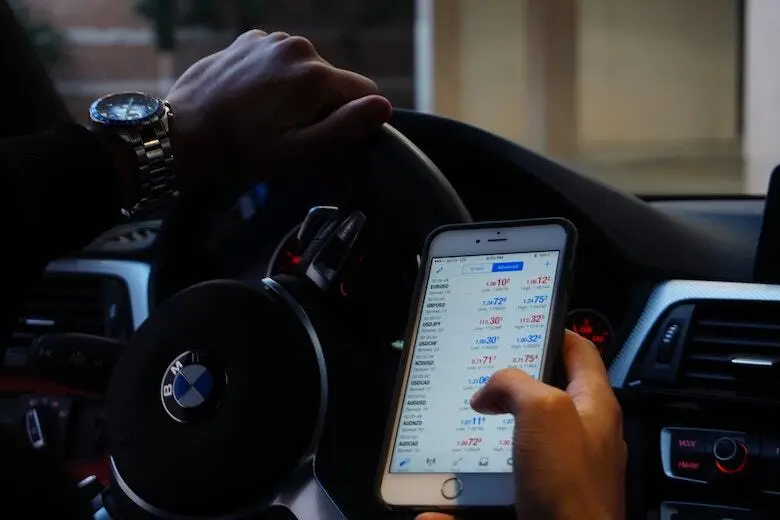A false breakout Forex appears as though the price is about to break either up or down, but shortly thereafter, it reverses. Often, this deceives traders into perceiving it as a genuine breakout. The danger lies in professionals starting to push the market in the opposite direction, and newcomers or those acting on emotions end up making unsuccessful trades, taking false signals as genuine, and failing to consider indicators of other indicators or risk management tools such as stop-loss and take-profit. Therefore, in the beginning, while you haven’t yet learned to recognize false market signals, it’s worth using the best EA MT4 to not only avoid mistakes but also leverage false price breakouts to your advantage.

Table of Contents
What is False Breakout?
To understand how to identify false breakout in Forex, you should know what a real breakout is. It looks like this: the price of an asset exceeds the normal price range, i.e., beyond the levels of support and resistance. This impulse is stable and lasts for a certain period. The asset continues to increase or decrease in price after the breakout. However, if the breakout occurs briefly and then returns to normal, this phenomenon is called a false breakout. In this case, the market cannot sustain the impulse.
How to Identify False Breakout in Forex
To avoid the risks associated with a failed break, you need to learn to distinguish between a real and false price breakout. Here’s how you can do it:
- Pay attention to timing and avoid making emotional decisions. False breakouts don’t last long; they disappear shortly after appearing on the chart.
- Monitor price dynamics historically. False breakouts are typically associated with a specific season or related to specific economic events. Of course, historical data doesn’t guarantee that the price will behave the same way in the future. However, past figures can serve as a guide to understanding when to enter or exit trades and when it’s better to wait for confirmation of the trend or realize that the breakout was false.
- Thorough technical analysis provides crucial information. Confirm the data obtained through technical analysis with other signals. If the analysis results are contradictory, you’re likely dealing with a false breakout.
False breakouts trap bulls or bears. A bull trap occurs when the price breaks above the upper resistance line but swiftly falls down or returns to the previous level. A bear trap is the reverse: the asset’s price falls below the support level and then rises again before the authenticity of the breakout is confirmed.
How to Avoid Failed Break
When you are looking for how to avoid false signals in Forex, remember that knowledge and experience are the best tools.
- Act slowly. The simplest way to avoid risk is to wait to confirm the trend, carefully monitoring charts and indicator signals.
- Use Candlestick Patterns. The strength of a candlestick is confirmed when it closes. Keep in mind that the stronger the breakout, the higher the probability it was false. If you don’t have time to watch the chart, you can set up notifications, and the system will automatically inform you of market condition changes.
- Analyze multiple timeframes. It’s easiest to spot the potential for a real breakout on daily charts by comparing the results with wider timeframes.
- Consider patterns like Ascending Triangles, Head and Shoulders, and Flags. These patterns often indicate the likelihood of a false breakout as they serve as indicators of a short-term market correction.
How to Trade False Breakout Patterns
False breakout patterns carry not only a threat to your assets but also real opportunities to earn a profit if used correctly. The main challenge is correctly identifying short-term breaks of support or resistance lines and understanding that the price will reverse from the current point. This is a great opportunity to profit from short positions.
- Start by identifying key support and resistance lines for the asset.
- Wait for the breakout and confirm it with oscillators and candlestick patterns. Recognizing a reversal after a false breakout can be done by identifying overbought and oversold conditions of the asset and by looking for candlestick patterns like shooting stars or hammers.
- Enter the trade in the direction opposite to the breakout and set a stop loss.
- After confirming the price reversal, adjust your stop-loss and take-profit points.
In addition to technical knowledge, be patient because the term “short-term” in the case of false breakouts can last from several hours to several days. Therefore, you should rely on logic, experience, and analysis results rather than emotions.
Summary
False breakouts serve as the basis for the trading strategy of some traders, who can differentiate between a real price reversal and short-term fluctuations. Misusing such a strategy can lead to fatal financial mistakes, but you can achieve truly impressive results by learning to avoid bull and bear traps.











Leave a Reply